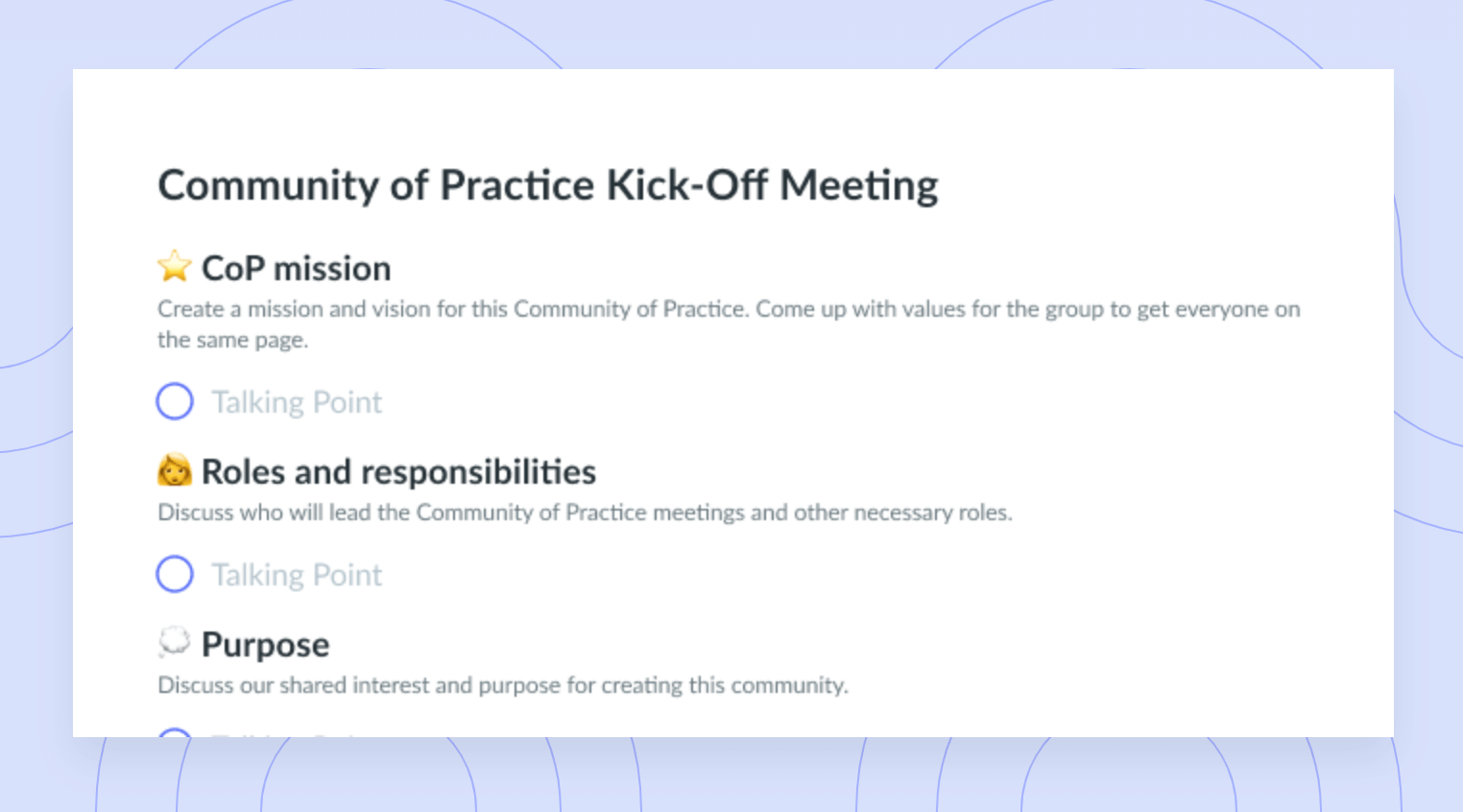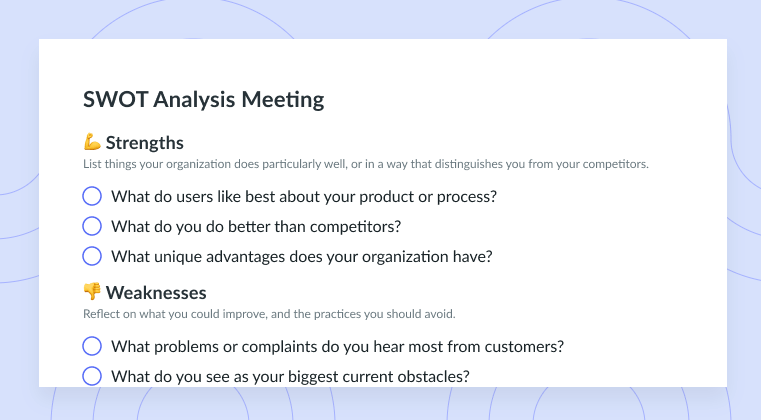
Stakeholder Analysis Meeting Template
Get this templateWhen planning and executing a project, use this stakeholder analysis template to manage your stakeholders.


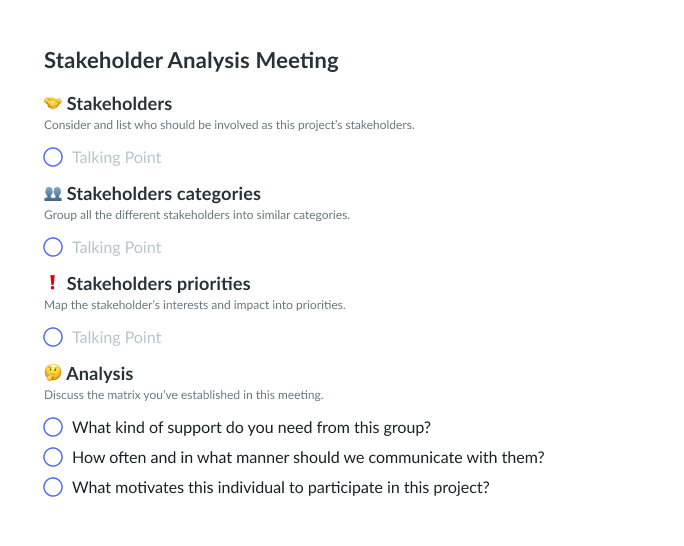

Stakeholder Analysis Meeting Overview
“To keep everyone invested in your vision, you have to back up a little bit and really analyze who the different stakeholders are and what they individually respond to.” – Alan Stern
It can be difficult to establish the appropriate level of communication with your stakeholders, but nonetheless, it’s essential to meet with them regularly to let them know where your business stands financially, as well as where it’s headed. Stakeholder analysis meetings allow you to map out and establish the best ways to communicate with your stakeholders, and how much communication is necessary.
The amount that you communicate with your stakeholders is directly related to the interest and influence they have in your project or business. A great analysis will tell you what each stakeholder needs and expects from the project, and who you need to communicate with pertaining to those expectations. You can nail down how often you should speak with stakeholders and when to keep them informed as the project progresses.
You’ll want to group your stakeholders in accordance to participation and involvement, prioritizing them by which have the biggest stake in your project. Everyone that has a hand in the stakeholder aspect of your business, which is typically owners and upper management, should participate in a stakeholder analysis meeting.
These meetings are important to have regularly, once a month or once quarterly, to assess stakeholder involvement. You’ll want to hold a stakeholder analysis meeting at the beginning of every major project in which they might be invested.
How to Run an Effective Stakeholder Analysis Meeting
The key to running any effective meeting is preparation, and right behind that, is organization. The good thing about a stakeholder analysis is that you’re holding the meeting specifically to get organized regarding your stakeholders, so there is a certain task to be accomplished within the meeting that you can get yourself very prepared to handle.
A stakeholder meeting template will be efficient in helping you handle any turn the stakeholder analysis meeting might take, and you’ll have every note you need in front of you to break down stakeholders into categories and establish the best way to go about communicating with each of them.
Remember to leave some time for brainstorming on your stakeholder meeting agenda template, as there will have to be some conversation on the topic, no matter how prepared you are. All stakeholders are important, but it’s likely that your analysis will place a heavy focus on those that are most influential, and this is to be expected. However, make sure you and your team discuss every stakeholder level.
What’s inside this Stakeholder Analysis Meeting Template:
“A healthy corporation acts on the interests of its stakeholders and customers.” – Ari Melber
Meeting templates can be life-saving in the event that a meeting begins to move off the track, which happens more often than not. When it comes to stakeholder analysis, a stakeholder meeting agenda template will prepare you with the points you need to make right from the start.
1 🤝 Stakeholders
Consider and list who should be involved as this project’s stakeholders.
Begin your meeting by identifying who your stakeholders are regarding this particular project or upcoming projects. They might be new, or they could be stakeholders that have had an interest in past projects of yours. Stakeholders are often team members or the client for which you’re completing the project.
You can come into this part of the meeting completely prepared to name your project stakeholders, but ensure that you leave time for a brainstorming session, as there is likely one or two that you’ve missed.
2 👥 Stakeholders categories
Group all the different stakeholders into similar categories.
Once you’ve named your stakeholders, you’ll want to separate them into categories. There are a few category perspectives that you can take here, but it’s common to separate stakeholders into types. Consider customers, employees, investors, suppliers, vendors, and even the community.
Once you’ve determined who your stakeholders are, you can separate them according to the influence they have on your project. Influence level will determine how often you communicate with your stakeholders, or if you deem it necessary to communicate with them at all.
3 ❗ Stakeholder’s priorities
Map the stakeholder’s interests and impact into priorities.
Now that you’ve separated your stakeholders into categories, it’s time to prioritize those categories. Most businesses choose which stakeholders hold the most priority by focusing on the basis of their relationship with the company, or by using a mixture of their power and interest. Stakeholders should be beneficial to your business, but they must also see components that will benefit them.
By prioritizing stakeholders that hold the most interest in your business and communicating with them often, you’re creating a reliable stakeholder-business relationship. Don’t be afraid to prioritize stakeholders.
4🤔 Analysis
Finally, you’ll end the meeting with your stakeholder analysis. By the end of the meeting, this section should hold your most important stakeholders and those that will receive the highest level of communication. Also, you should have established in which ways you’ll communicate with them, and how often.
When it comes to business, there are typically many people that have a stake in a project. Though everyone matters, it’s crucial to correctly distribute information and communication to those that have the largest interest. That is the bottom line.
Discuss the matrix you’ve established in this meeting.
- What kind of support do you need from this group?
- How often and in what manner should we communicate with them?
- What motivates this individual to participate in this project?

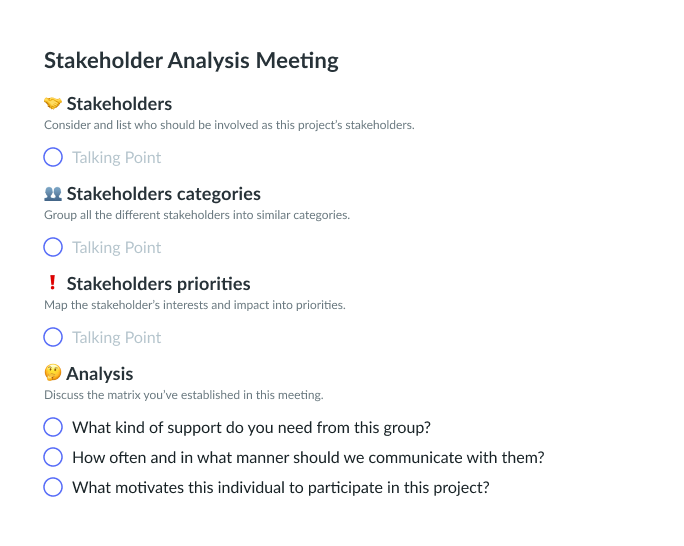





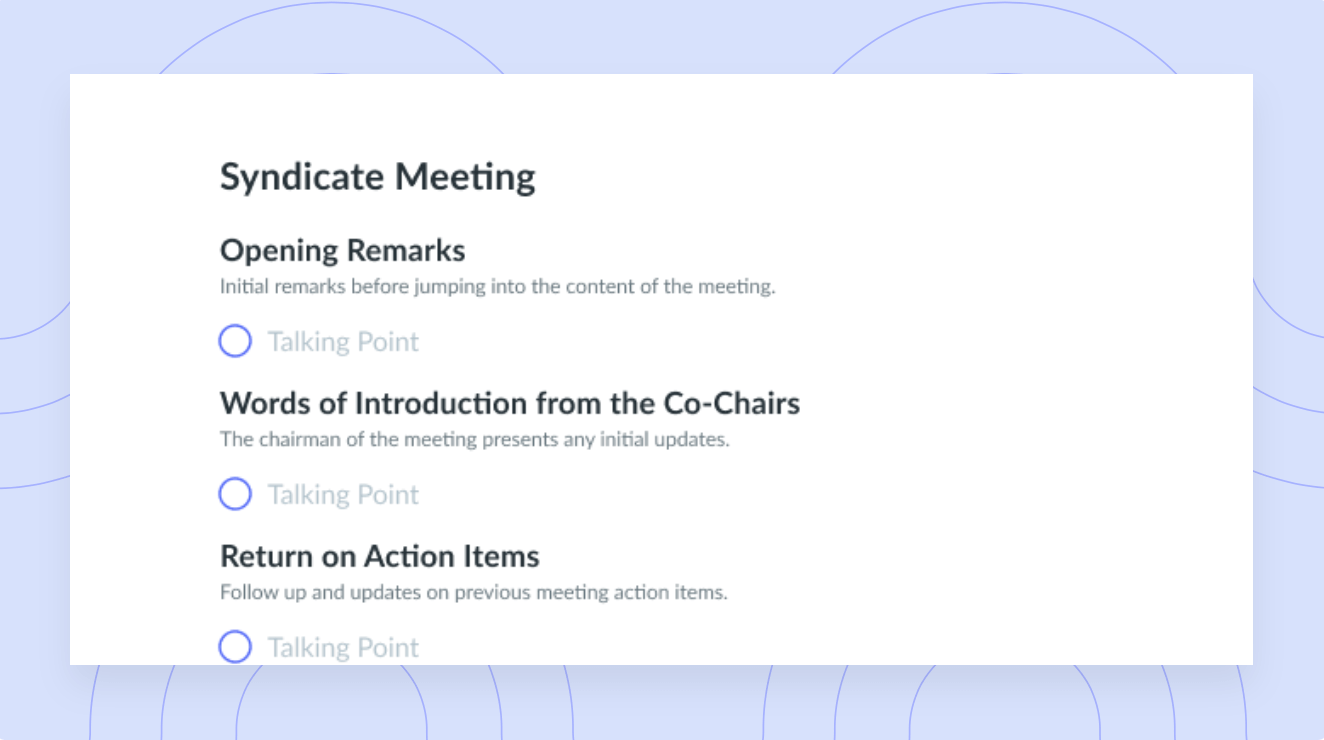
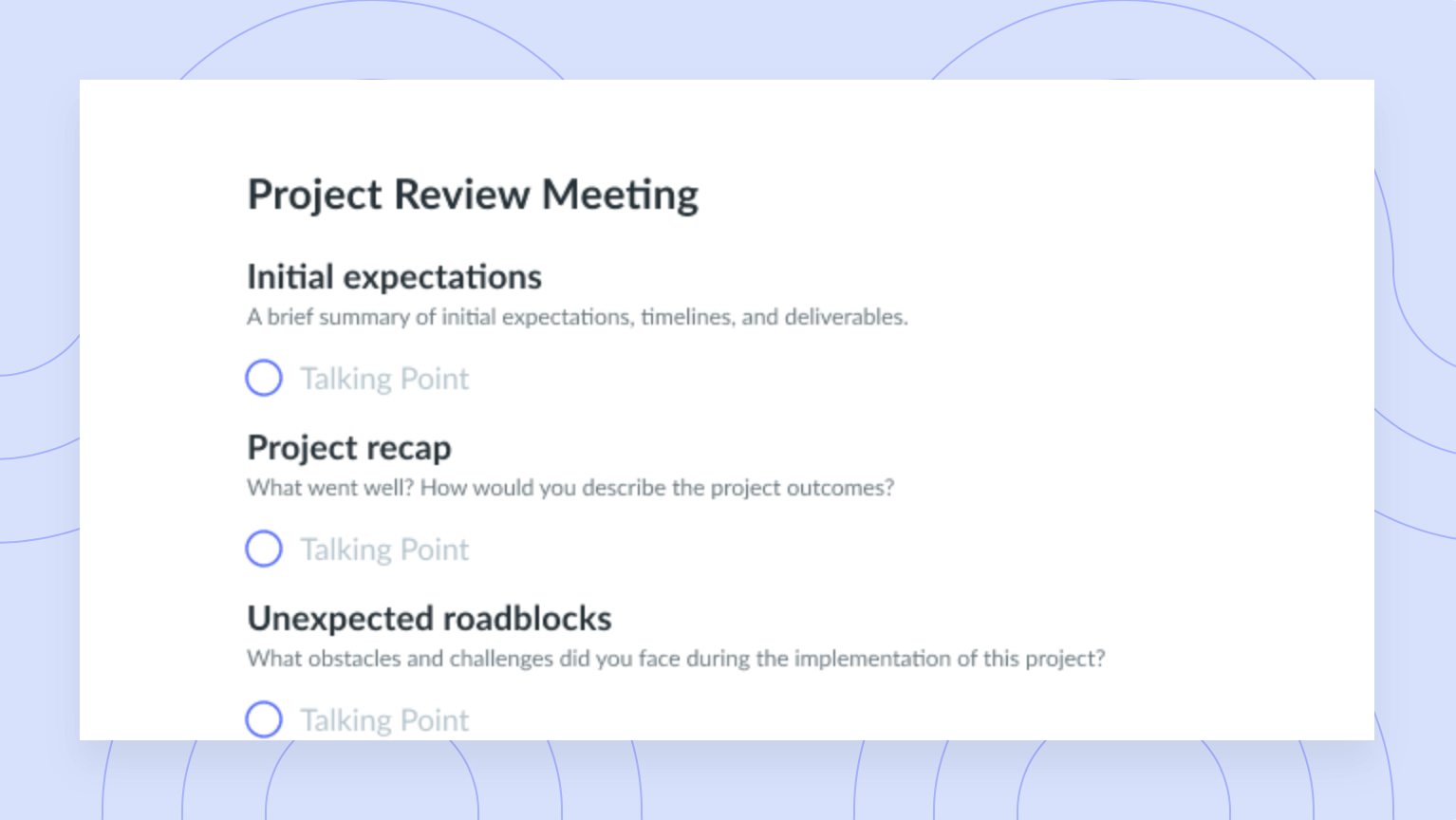
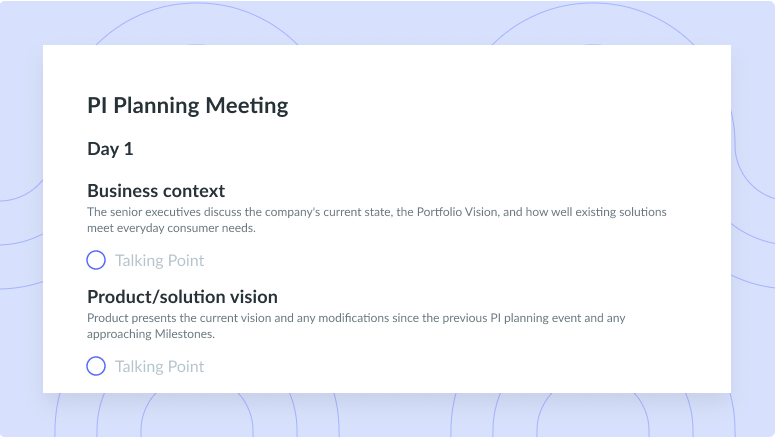
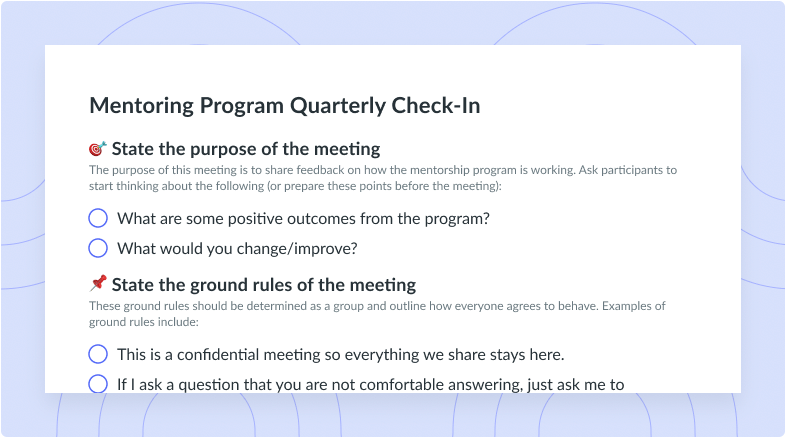
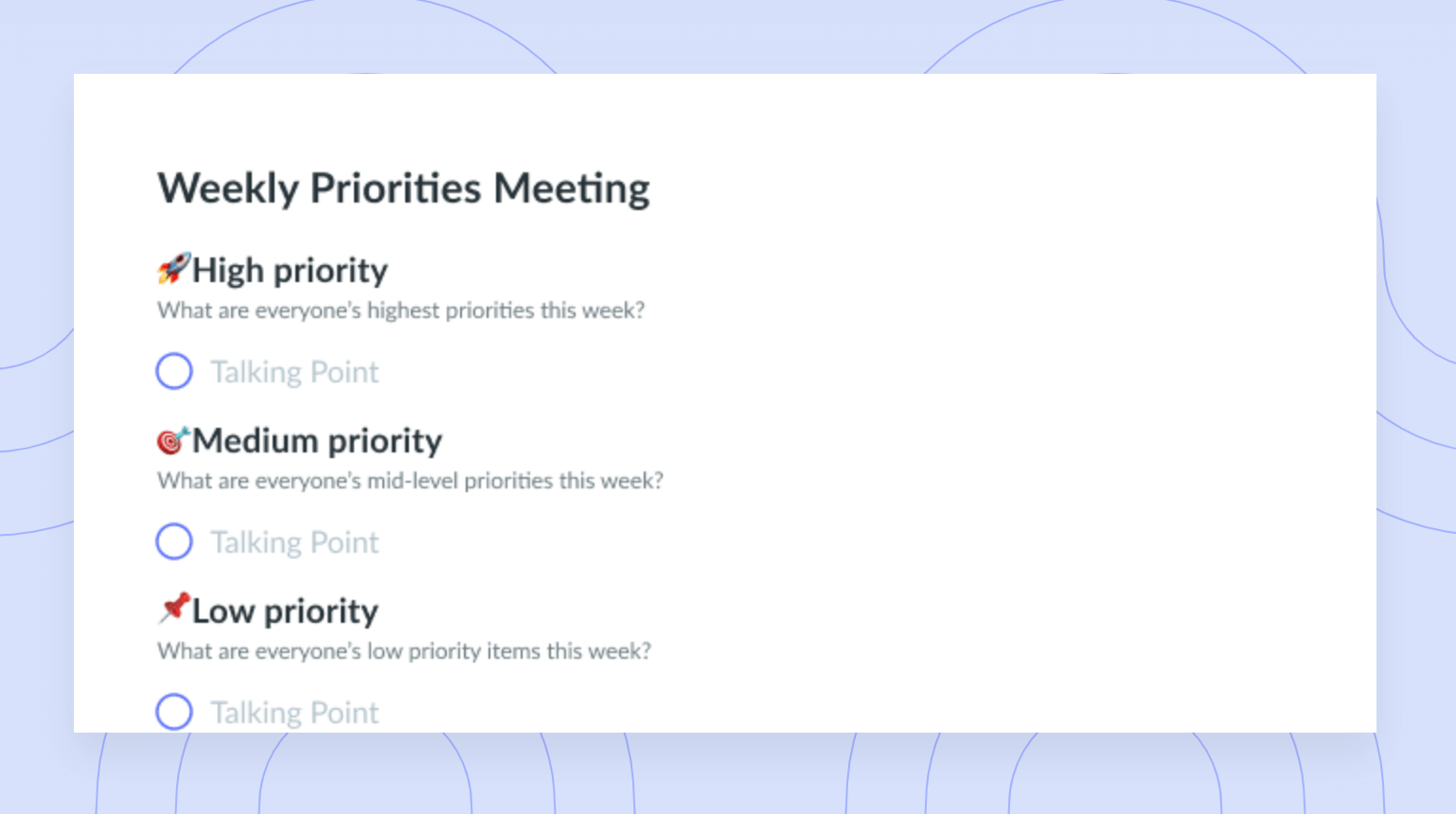
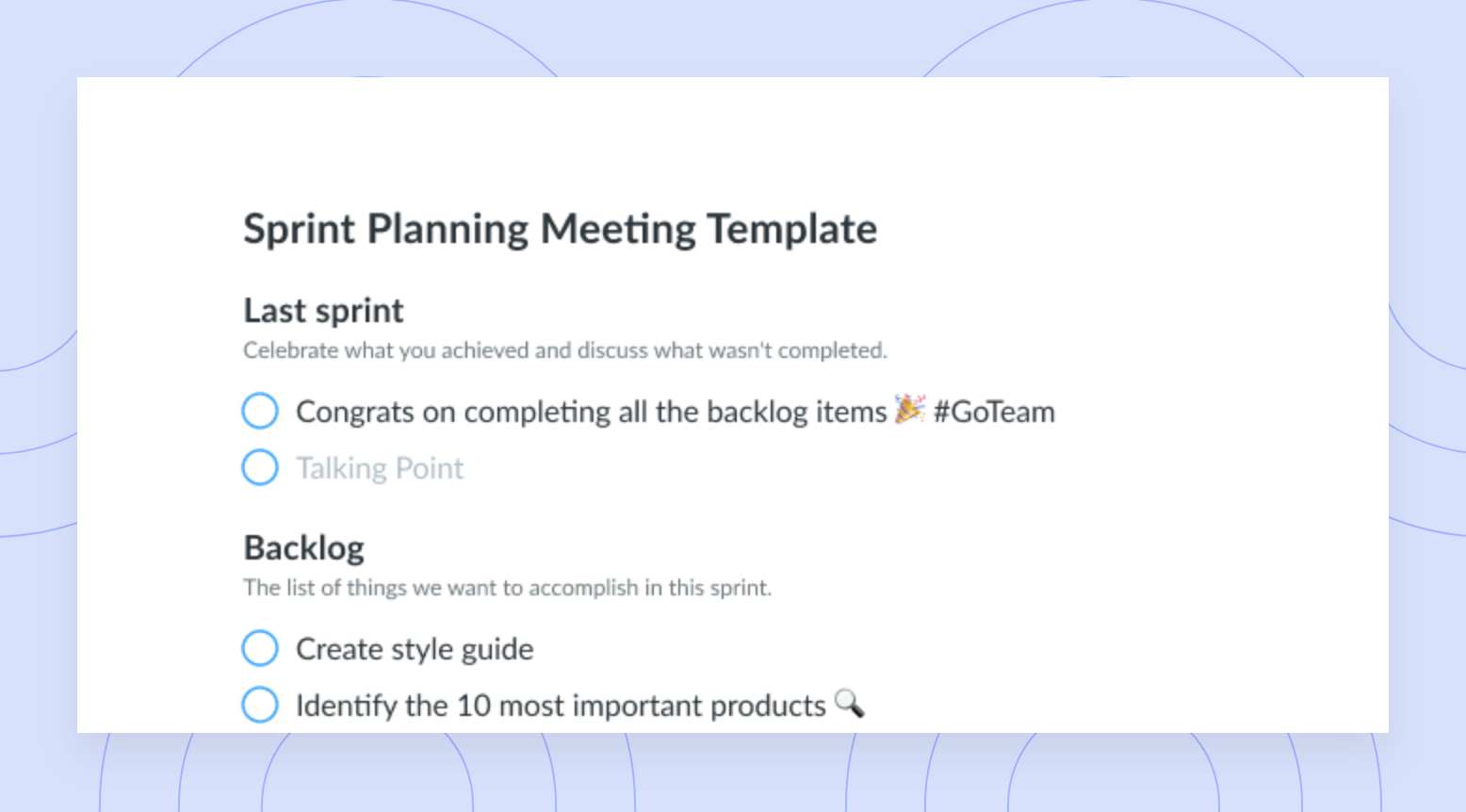
![What? So What? Now What? [Reflection Meeting] Template](https://fellow.app/wp-content/uploads/2021/08/What-So-What-Now-what-preview-v2.png)
